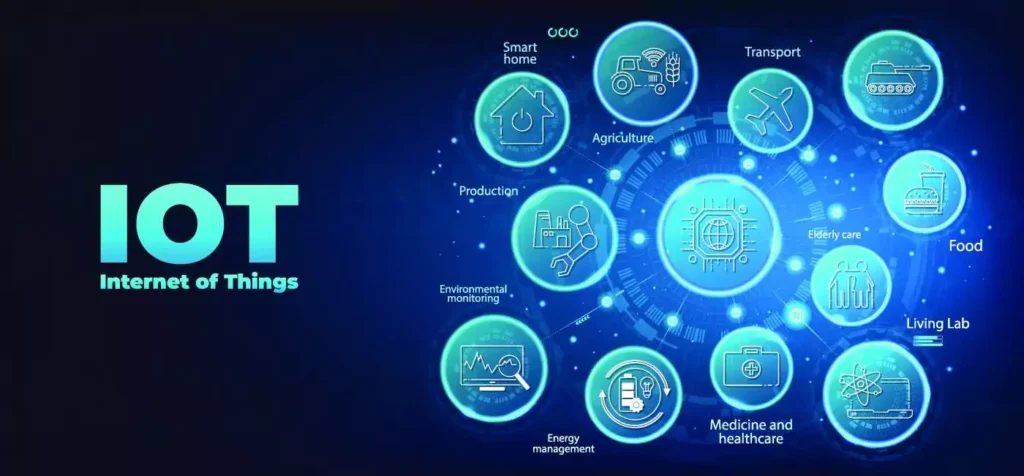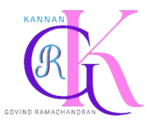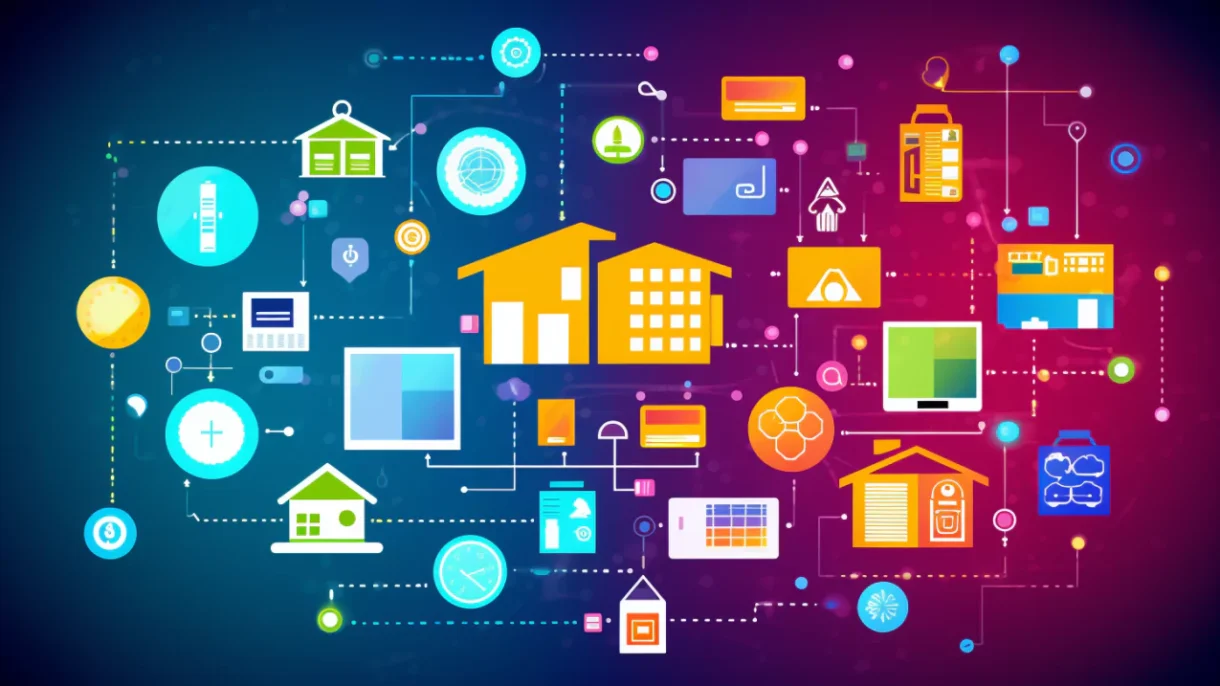Introduction: The Internet of Things (IoT) has emerged as a groundbreaking technology that is revolutionizing the way we interact with our surroundings. With the ability to connect everyday objects to the internet and enable seamless communication and data exchange, the IoT is reshaping industries, enhancing efficiency, and transforming the world we live in. This article provides an overview of the Internet of Things, its applications, benefits, challenges, and future prospects.
Understanding the Internet of Things: The Internet of Things refers to the network of physical devices, vehicles, appliances, and other objects embedded with sensors, software, and connectivity that enable them to collect and exchange data. These devices are interconnected and communicate with each other through the internet, enabling real-time monitoring, control, and automation of various processes.

Applications of IoT: The applications of IoT are vast and diverse, spanning across numerous industries. In the healthcare sector, IoT devices are used for remote patient monitoring, smart medical devices, and improving the efficiency of healthcare delivery. In transportation, IoT enables connected vehicles, intelligent traffic management systems, and logistics optimization. Smart homes utilize IoT to automate tasks, enhance security, and improve energy efficiency. Industrial IoT (IIoT) is revolutionizing manufacturing and supply chain management by enabling predictive maintenance, real-time monitoring, and process optimization. Agriculture, retail, energy, and many other sectors are also leveraging IoT to enhance productivity and deliver innovative solutions.
Benefits of IoT: The Internet of Things offers several key benefits. Firstly, it enhances efficiency by automating processes, optimizing resource utilization, and reducing human intervention. IoT enables real-time data monitoring, allowing for timely decision-making and preventive maintenance, which leads to cost savings and increased productivity. Additionally, IoT improves the quality of life through smart homes, wearable health trackers, and personalized services. It also enables greater sustainability by optimizing energy consumption, waste management, and environmental monitoring. Furthermore, IoT fosters innovation by enabling the development of new products, services, and business models.
In the digital era, the Internet of Things (IoT) has emerged as a groundbreaking technology, reshaping industries and revolutionizing the way we interact with the world around us. This article delves into the transformative power of IoT and its pivotal role in driving digital transformation across various sectors.
Understanding the Internet of Things
At its core, the Internet of Things refers to the network of interconnected devices embedded with sensors, software, and other technologies that enable them to collect and exchange data. These devices can range from everyday objects such as smart appliances and wearable devices to industrial machinery and infrastructure.
The interconnected nature of IoT devices facilitates seamless communication and data exchange, paving the way for enhanced efficiency, productivity, and automation. By harnessing the power of IoT, organizations can gain valuable insights into their operations, optimize processes, and deliver innovative products and services to meet evolving customer demands.
Key Components of IoT
IoT comprises several key components that work together to enable connectivity and intelligence:
- Sensors and Actuators: These components serve as the eyes and ears of IoT devices, collecting data from the surrounding environment and initiating actions based on predefined parameters.
- Connectivity: IoT devices rely on various communication protocols such as Wi-Fi, Bluetooth, and cellular networks to transmit data to centralized systems or other connected devices.
- Data Processing and Analytics: The vast amounts of data generated by IoT devices are processed and analyzed in real-time to extract meaningful insights. Advanced analytics techniques such as machine learning and artificial intelligence play a crucial role in uncovering patterns, trends, and anomalies within the data.
- Cloud Computing: Cloud platforms provide scalable storage and computing resources for managing IoT data, hosting applications, and facilitating remote device management.
- Security: With the proliferation of connected devices, ensuring robust security measures is paramount to protect against potential cyber threats and safeguard sensitive data.
Applications of IoT Across Industries
The impact of IoT spans across various industries, driving innovation and enabling new business models:
- Smart Cities: IoT technologies are instrumental in creating smart, sustainable cities by optimizing resource utilization, improving public safety, and enhancing urban mobility through connected infrastructure and intelligent transportation systems.
- Healthcare: In the healthcare sector, IoT-enabled devices such as remote patient monitoring systems, wearable health trackers, and smart medical devices empower healthcare providers to deliver personalized care, improve treatment outcomes, and reduce healthcare costs.
- Manufacturing: IoT revolutionizes manufacturing processes by enabling predictive maintenance, real-time monitoring of equipment performance, and supply chain optimization. Smart factories leverage IoT technologies to enhance efficiency, quality control, and responsiveness to market demands.
- Agriculture: IoT solutions are transforming agriculture through precision farming techniques, automated irrigation systems, and crop monitoring sensors. By harnessing IoT data, farmers can optimize crop yields, minimize resource wastage, and mitigate environmental impacts.
Challenges and Concerns: While IoT brings tremendous opportunities, it also presents challenges and concerns. Security and privacy are major considerations, as interconnected devices can be vulnerable to cyber-attacks and unauthorized access. The vast amount of data generated by IoT devices raises concerns about data privacy, storage, and ownership. Interoperability and standardization issues can hinder seamless communication between devices from different manufacturers. Furthermore, the rapid proliferation of IoT devices necessitates robust network infrastructure and bandwidth capabilities.
Future Outlook: The Internet of Things is poised for exponential growth in the coming years. Advancements in connectivity technologies, such as 5G, will enable faster and more reliable communication, facilitating the widespread adoption of IoT devices. Edge computing will play a crucial role in processing data closer to the source, reducing latency and enhancing real-time decision-making capabilities. Artificial intelligence and machine learning will be integrated with IoT, enabling autonomous systems, predictive analytics, and intelligent automation. As the IoT ecosystem expands, businesses will continue to innovate and create new applications and services that leverage the power of connected devices.
Digital Transformation Enabled by IoT
The proliferation of IoT is driving a broader digital transformation across industries, encompassing changes in business processes, customer experiences, and organizational culture:
- Enhanced Customer Engagement: IoT enables organizations to gain deeper insights into customer behavior and preferences, facilitating personalized interactions and tailored offerings. From smart retail stores to connected vehicles, IoT-driven experiences enhance customer satisfaction and loyalty.
- Operational Efficiency: By leveraging IoT data and analytics, organizations can streamline operations, automate routine tasks, and optimize resource utilization. Predictive maintenance algorithms prevent costly equipment downtime, while real-time inventory management systems ensure optimal stock levels and reduce overhead costs.
- Data-Driven Decision Making: IoT empowers organizations to make informed decisions based on real-time data and actionable insights. From optimizing supply chain logistics to fine-tuning marketing strategies, data-driven decision-making drives competitive advantage and business growth.
- Agility and Innovation: IoT fosters a culture of innovation and agility, enabling organizations to adapt quickly to changing market dynamics and emerging technologies. By embracing IoT-driven innovation, companies can explore new revenue streams, enter untapped markets, and stay ahead of the competition.
Challenges and Considerations
Despite its transformative potential, IoT implementation poses various challenges and considerations, including:
- Security and Privacy Concerns: The interconnected nature of IoT devices increases the risk of cyber attacks and data breaches, necessitating robust security measures and regulatory compliance frameworks.
- Interoperability and Standards: The lack of standardized protocols and interoperability between IoT devices can hinder seamless integration and data exchange, requiring industry-wide collaboration and standards development.
- Scalability and Complexity: As IoT deployments scale up, managing the complexity of interconnected ecosystems and data flows becomes increasingly challenging, necessitating scalable architectures and robust management tools.
Conclusion: The Internet of Things represents a transformative force that is reshaping industries, optimizing processes, and enhancing our daily lives. With its wide-ranging applications and numerous benefits, IoT has the potential to drive unprecedented levels of efficiency, convenience, and sustainability. However, addressing security, privacy, and interoperability challenges is crucial to unlocking the full potential of this technology. As IoT continues to evolve, we can expect a future where our world becomes increasingly interconnected, intelligent, and data-driven, opening up a world of possibilities for innovation and progress.
Follow Me for regular Updates on LinkedIn; Twitter; Facebook & Instagram for all Technology Articles
View My other Blog posts Here
Join Us on GRK Connect @ Telegram; Discord & LinkedIn Groups for Discussions on Technology


